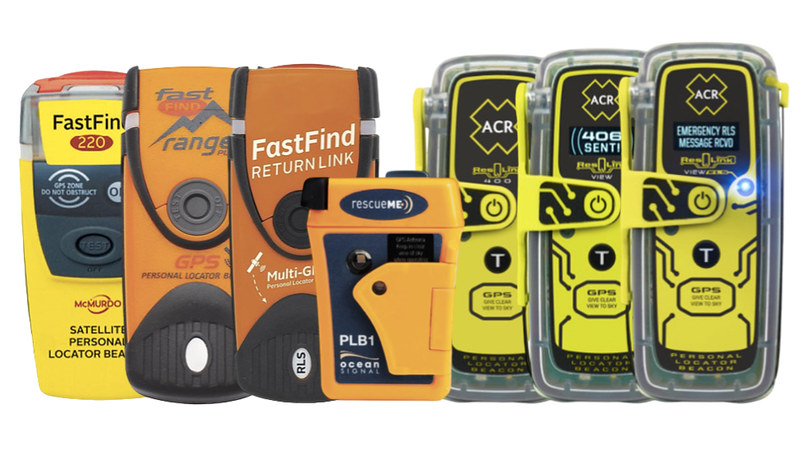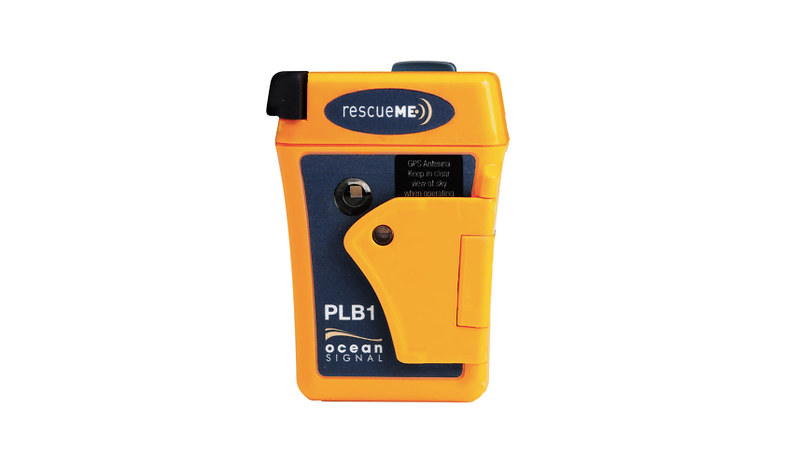As a sea kayaker, when you are in need of the emergency services you can often be in a very difficult situation. You could be hands on dealing with a casualty on the water, or even be the casualty in the water. Whatever the situation is it can be very useful to notify the emergency services of your need for help and location with the press of a button and that is what Personal Locator Beacons or PLB's do. However there is a wide variety of units on the market, with different specifications and features. We look at which ones best suit your needs as a sea kayaker.
Although they are expensive to buy upfront, the fact that there is no subscription fee and they have warranties for up to 7 years means they can be a cost effective option for calling for help in an emergency. They can normally be found significantly cheaper than their RRP so you will need to check the links for the latest price's.
Disclosure: Sea Kayak Paddler is supported by it's readers. When you buy through links on this page we may earn commission.
McMurdo FastFind 220
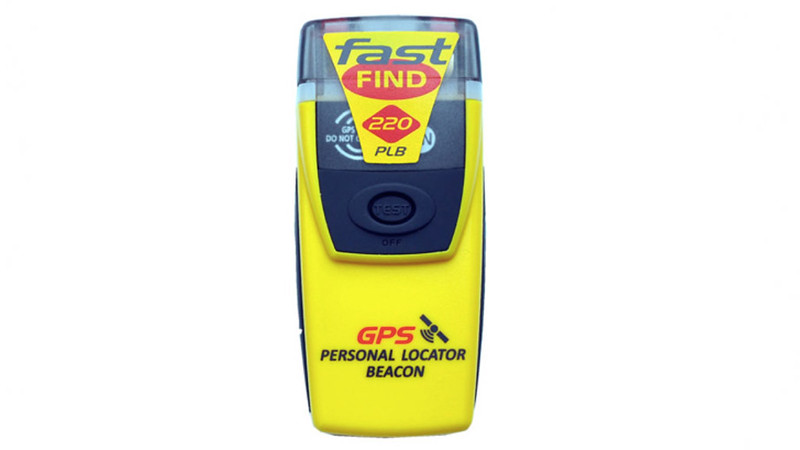
Compact and Budget
The McMurdo FastFind 220 is normally the cheapest PLB you can find on the market and as such is a good budget option. To activate the device you remove the top, extend the antenna and press the 'on' button. The provided bouyancy pouch is made of neoprean which gives it good protection. However its bulk does make it less convenient to store the device in a drysuit or PFD pocket.
Key Specs and Features:
- RRP: £330
- Waterproof: 10m
- Floats: No (Bouyancy pouch supplied)
- Strobe: Yes
- Operation life: 24 hours
- Drop proof: Not rated
- Self test: Battery and GPS
- Dimensions: 106x47x34mm
- Weight: 152g
- Warranty: 1 Year (+4 years with registration)
Check price at: Amazon (UK)
McMurdo Fastfind Ranger
Budget and Rugged
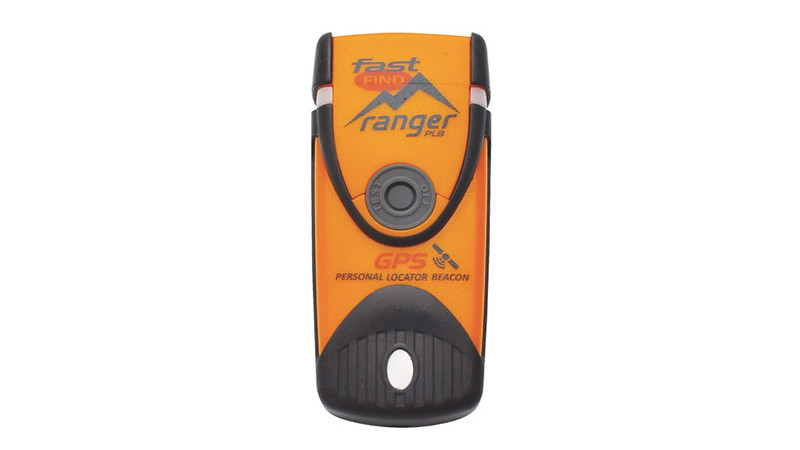
The McMurdo FastFind Ranger is built on the same chassis as the McMurdo Fastfind 220 PLB but aimed at walkers instead of mariners. It feels more robust and has increased rubberised protection to make it more rugged. This adds a little to the size and weight but makes for a more robust unit. It is waterproofed to the same standard but doesn't come with a bouyancy pouch. To activate the device you remove the top, extend the antenna and press the 'on' button.
Key Specs and Features:
- RRP: £330
- Waterproof: 10m
- Floats: No
- Strobe: Yes
- Operation life: 24 hours
- Drop proof: Not rated
- Self test: Battery and GPS
- Dimensions: 112x50x36mm
- Weight: 164g
- Warranty: 1 Year (+4 years with registration)
Check price at: Cactus Navigation (UK)
Ocean Signal RescueME PLB1
Ultra Compact and Tough
The RescueME PLB1 is the smallest PLB on the market, as well as the toughest and most waterproof. It can be fitted to a PFD using it's mounting cradle and strap, or its compact and robust form means you can put it in a drysuit pocket or even a PFD front pocket, where it is robust enough to cope with being knocked about. A spring loaded flap covers the activation button preventing inadvertent use & the retractable antenna is easily deployed by simply pulling it out. It can be activated with one hand, even with gloves on. A strobe helps the emergency services pinpoint your location in the dark. It's 7 year battery storage lifetime is 2 years longer than any other PLB.
Key Specs and Features:
- RRP: £355
- Waterproof: 15m
- Floats: No (Bouyancy jacket available)
- Strobe: Yes
- Operation life: 24 hours
- Drop proof: 1m
- Self test: Battery and GPS
- Dimensions: 77x51x33mm
- Weight: 116g
- Warranty: 7 Years
Check price at: Amazon (UK)
ACR ResQLink 400
Infrared Strobe and Bouyant
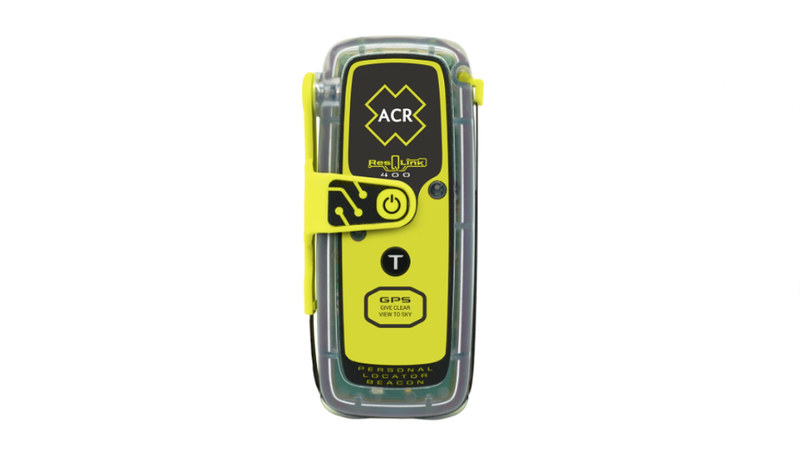
The ResQLink 400 PLB is buoyant. It's white light and infrared strobe's facilitate night time or low visibility rescues. To activate you slide out and release the antenna from where it is wrapped around the outside of the unit, this exposes the 'on' button. The antenna is quite prone to being accidentally released, especially when putting in or getting out of a drysuit or PFD pocket so its probably best stored inside a hatch. The clear housing feels a little brittle but it does make it easy to check for any water ingress.
Key Specs and Features:
- RRP: £365
- Waterproof: 10m
- Floats: Yes
- Strobe: White and Infrared
- Operation life: 24 hours
- Drop proof: Not rated
- Self test: Battery and GPS
- Dimensions: 120x52x38
- Weight: 148g
- Warranty: 5 Years
Check price at: Amazon (UK)
McMurdo FastFind ReturnLink
Signal received confirmation and rugged
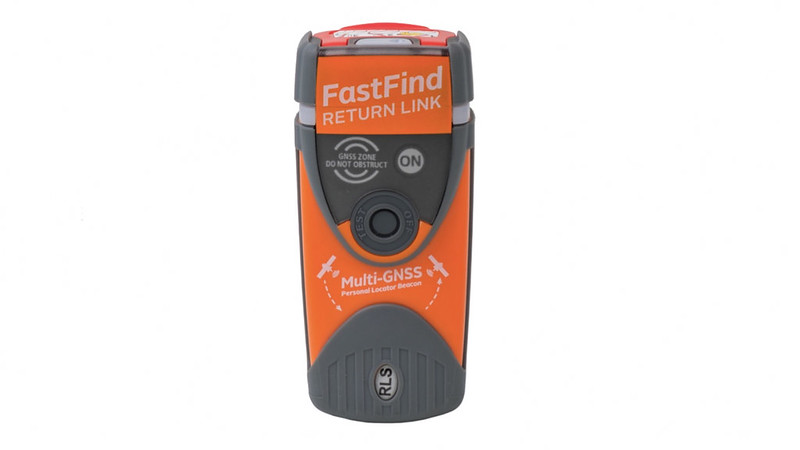
The FastFind ReturnLink PLB, uses the Galileo Return Link Service to send a signal back to the beacon confirming the distress alert has been received and the location coordinates have been detected. This takes aproximately 15 minutes and activate's a blue light on the beacon when completed. To activate the device you remove the top, extend the antenna and press the 'on' button. It comes with a mounting cradle however this is designed to be clipped to the oral tube of a lifejacket and so is not suitable for sea kayakers. The casing has rubber sections which makes the unit feel fairly rugged and the provided bouyancy pouch is made of neoprean which gives it even more protection. However it does make it less convenient to store in a pocket.
Key Specs and Features:
- RRP: £399
- Waterproof: 10m
- Floats: No (Bouyancy pouch provided)
- Strobe: Yes
- Operation life: 24hrs
- Drop proof: Not rated
- Self test: Transmitters, battery + light
- Dimensions: 112x50x36mm
- Weight: 164g
- Warranty: 1 year (+4 years with online registration)
Check price at: Cactus Navigation (UK)
ACR ResQLink View
Signal sent confirmation
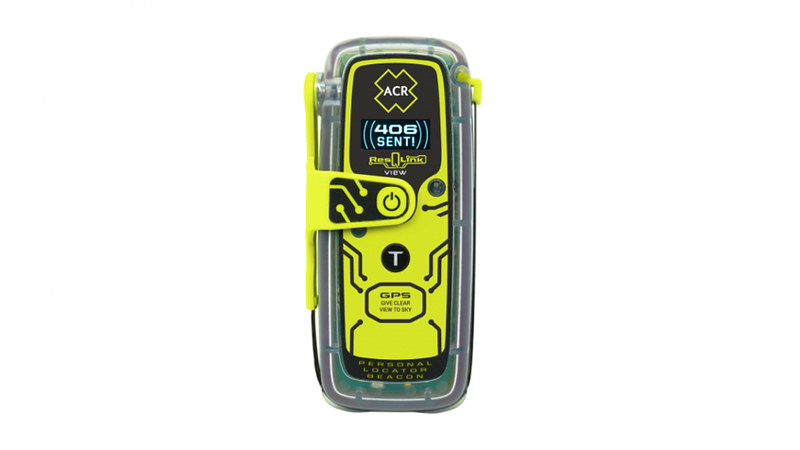
The ResQLink View PLB takes all the features of the ARC ResQLink 400 and adds a digital LCD display allowing you to view live beacon status and GPS coordinates throughout the rescue process. This confirms that the signal is transmitting and the location has been determined. As with the 400 it is possible for the aerial to be pushed loose of its holder and unwrap from where it is wrapped around the body of the unit. Again the clear housing does make it easy to inspect for water ingress.
Key Specs and Features:
- RRP: £429
- Waterproof: 10m
- Floats: Yes
- Strobe: White and Infrared
- Operation life: 28hrs
- Drop proof: Not rated
- Self test: Battery and GPS
- Dimensions: 115x52x38mm
- Weight: 148g
- Warranty: 5 years
Check price at: Amazon (UK)
ACR ResQlink View RLS
Signal received confirmation
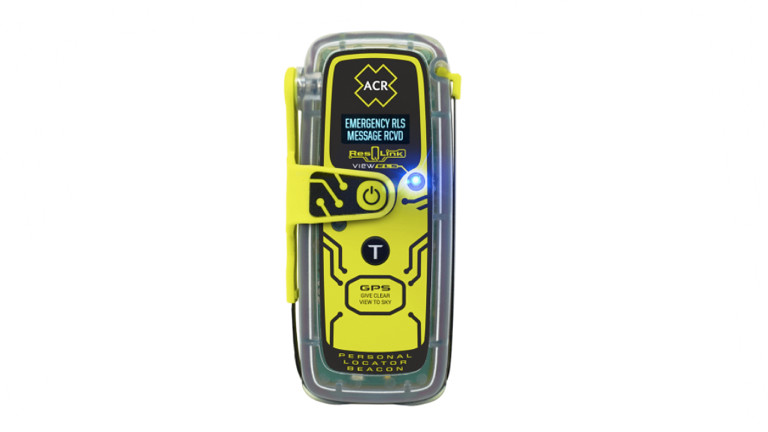
The ResQlink View RLS has the features of the ARC ResQLink View with the addition of the Return Link Service (RLS) feature. RLS works by sending a signal back through the satellite network to confirm to the user that the distress message has been received and their location has been detected. This takes aproximately 15 minutes and confirmation is indicated by a flashing blue light and a corresponding confirmation message on the digital display.
Key Specs and Features:
- RRP: £500
- Waterproof: 10m
- Floats: Yes
- Strobe: White and Infrared
- Operation life: 28hrs
- Drop proof: Not rated
- Self test: Battery and GPS
- Dimensions: 115x52x38mm
- Weight: 148g
- Warranty: 5 years
Check price at: Amazon (UK)
Programming & Registration
Personal Locator Beacons are pre-programmed with a country code. Most PLB's sold in the UK are programmed to the UK, but you need to check. Whilst they will function anywhere in the world, the first authority to be contacted in an emergency situation would be the UK Coastguard Agency in Falmouth with whom the PLB would be registered.
Registering your Personal Locator Beacon is required by law in most countries. Registering is very important because should your beacon ever be activated, it is how Search and Rescue Teams will know who you are, and the contacts provided may be able to supply information about your specific situation. In the absence of this information, it may take longer for a search-and-rescue operation to begin.
To register your device, you must provide your unique Beacon HEX ID number, which can be found on your PLB and box. Use this link to register your device: https://406registration.com/
How do they work?
A PLB is manually activated by the user. It transmits a digital SOS signal on the 406 MHz frequency. As well as your GPS location it sends a unique 15-digit identification number. This is picked up by satellite system's.
When the Coastguard receives a message that you are in trouble they will access your beacon registration. This will tell them who the device belongs to and any additional emergency contact information that you have submitted when registering the device. They will then call out the relevant Search and Rescue Service.
The rescue team will then pinpoint your location using your PLB's 121.5 MHz homing signal. This enables the Search and Rescue services to pinpoint your exact location.
Because PLB’s work using satellites your PLB must have a clear line of vision to the sky. This means that it must be kept above the water. It is worth considering how you might achive this when it is operating so as to free up your hands.
They transmit for 24 hours plus and can be used where there is no mobile or VHF signal.

By Philip Clegg
With over two decades of working in the sea kayaking industry, Phil can be found on a daily basis coaching on the sea around Anglesey. That's when he's not researching and writing on all things sea kayaking.

